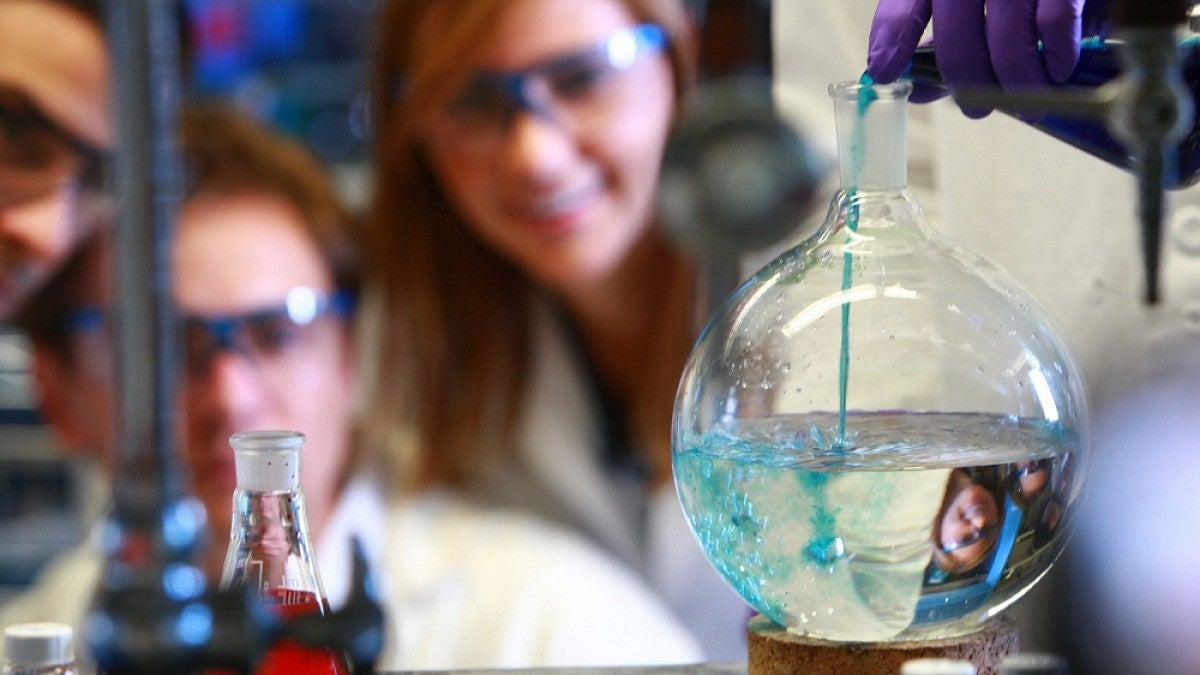Several years ago Josh Snodgrass noticed that faculty members who showed exceptional engagement with undergraduate research weren’t getting the recognition they deserved.
“I think we’re often not rewarding our faculty for things that they do that are exceptional for supporting our students, and this just seemed a gap,” Snodgrass said.
In the fall of 2017, the University of Oregon CURE Mentor awards were born, named for the Center for Undergraduate Research and Engagement, which Snodgrass directs.
For its inaugural year, the UO CURE awards will go to professors Judith Eisen and Samantha Hopkins and the Chemical Synthesis Group, a team composed of professors Michael Haley, David Johnson, Vickie DeRose, Michael Pluth, Ramesh Jasti, Darren Johnson, Ken Doxsee, and David Tyler for their exceptional work with undergraduates.
The awards will be given at the Undergraduate Research Symposium in the Erb Memorial Union on May 17 at 5 p.m.
Students, faculty members, alumni and staff members submitted 21 nominations. Snodgrass worked with two others to compare the candidates. Judges looked at the extent and effects of involvement in undergraduate research, excellence in mentoring, time spent and more.
Winners of the award were granted $2,500. Originally, two awards were going to be given; however, a third was added to include the Clark Honors College.
“We could have easily given six, seven, eight, nine of these awards. That many people were totally deserving,” Snodgrass said. “I hope they get nominated next year.”
Judith Eisen, a biology professor at the UO for 30 years, works closely with undergraduates studying neurons using zebrafish.
“I was totally flabbergasted,” Eisen said. “Flattering is too shallow of a word; it’s really a huge acknowledgment that I was nominated and selected.”
Samantha Hopkins, an associate professor in earth sciences and associate dean at the Clark Honors College, works with five undergraduates and three graduate students. Many of her undergraduates are getting hands-on experience in the field looking at fossils and identifying extinct fauna.
“I’m really lucky that from the first day I came here, there have been these great students who wanted to work on paleontology,” Hopkins said. “So yeah, if I had to thank anybody for this, it’s the great students who have brought great attitudes and made it fun.”
The eight-person team that makes up the Chemical Synthesis Group has more than 163 years of combined knowledge as well as 499 undergraduate researchers. All of that research has led to 221 publications with undergraduate researchers listed as co-authors.
“It keeps me feeling young,” Haley laughed. “We have the opportunity to really be able to educate, train and excite the next generation of chemists. We’re all for it.”
Tyler, the chemistry department head, noticed a number of the faculty members wanted to be nominated for the award. Shortly after, the Chemical Synthesis Group was entered as a candidate for the CURE award.
“To be honored with this is a great joy and pleasure,” Haley said. “But we got it because of the successes of our students. Who this award really should honor is the students and how successful they’ve been.”
Of the eight people involved in the Chemical Synthesis Group, Pluth, Tyler, Jasti and Johnson will attend the award ceremony May 17.
—By Bryan Dorn, University Communications


